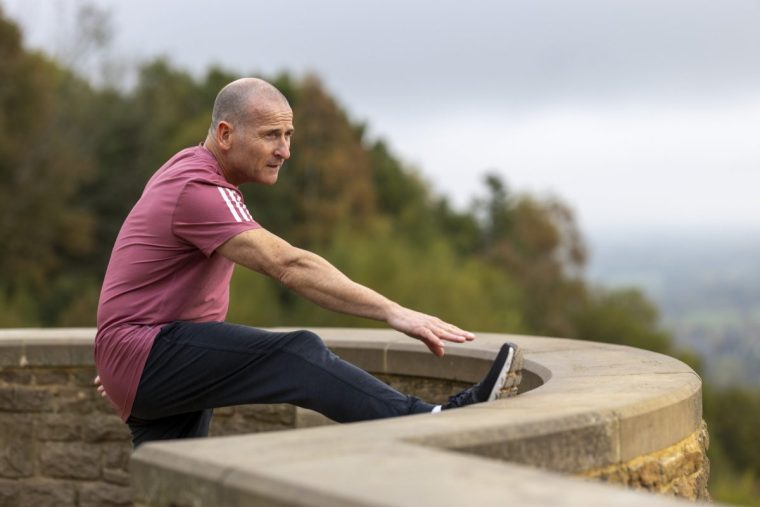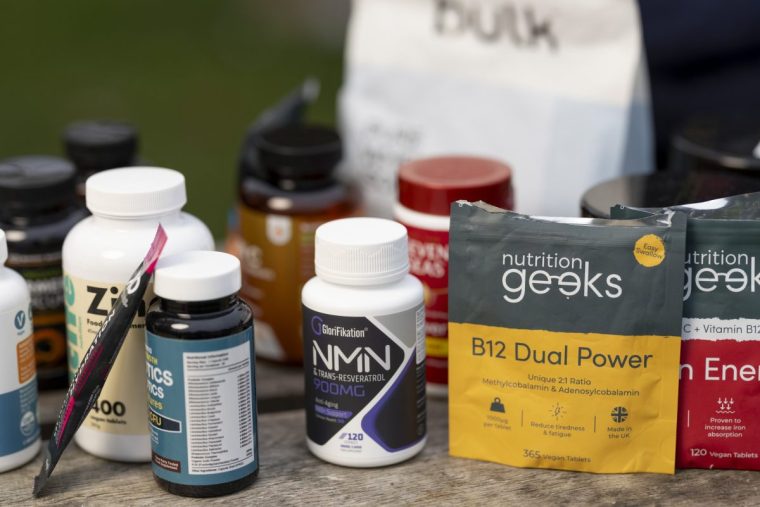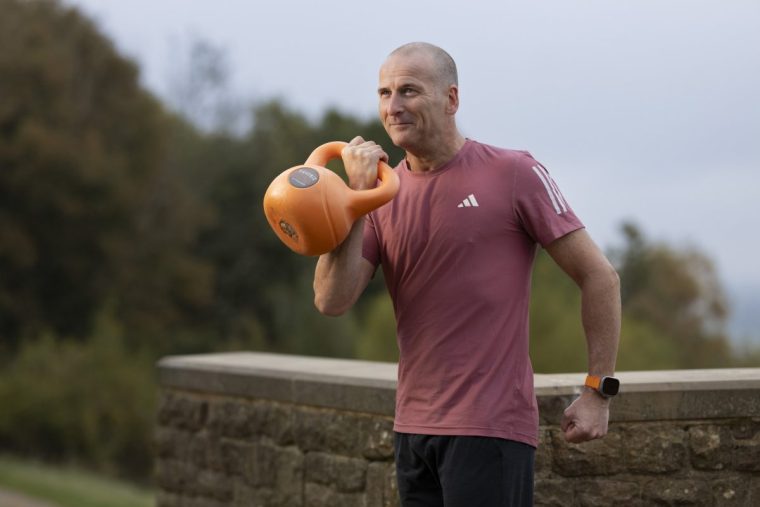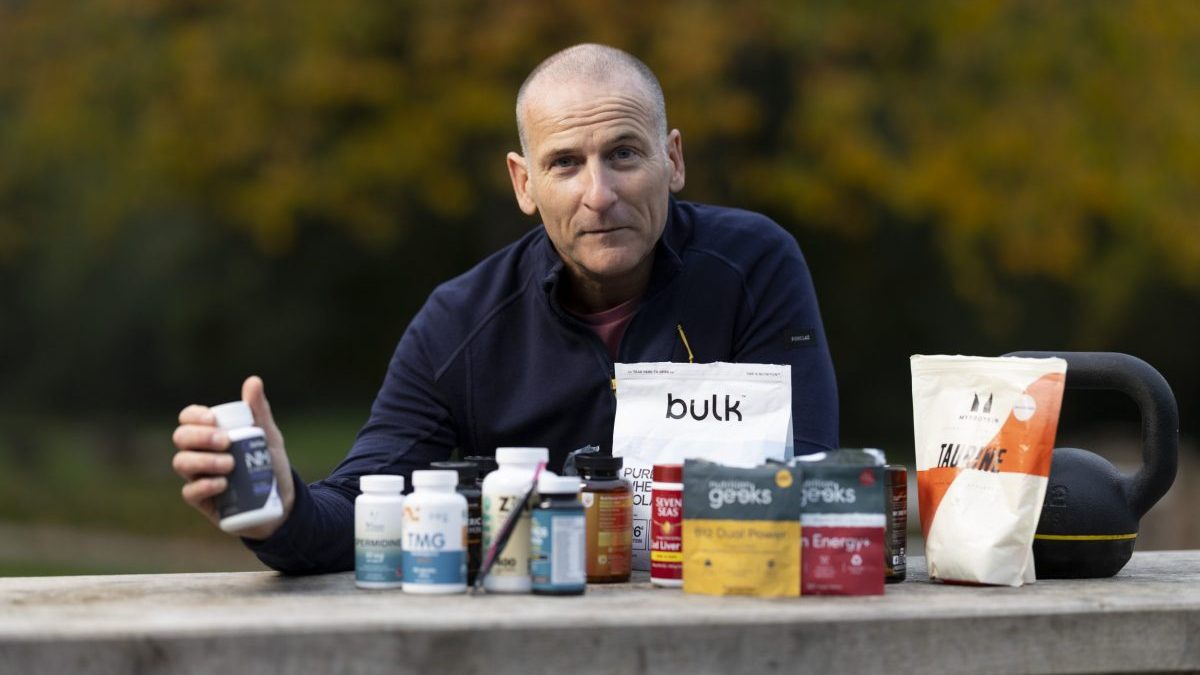Not so long ago, the dad bod was a thing. In the 2010s, middle-aged men were told middle-aged spread was desirable. It was sexy to be pudgy and old, so we met in pubs, drank beer, ate kebabs and happily capitulated to age, lazily waving the white flag in the face of slowing metabolism and tapering testosterone levels. We succumbed to the siren call of the sofa – and biscuits.
But in the past half-decade something strange has happened. It started in Silicon Valley where rich tech bros started experimenting with immortality. They tried different pills and potions to slow or stop the aging process. There were IV vitamin drips, blood transfusions from younger men, hyperbaric oxygen chambers. We all laughed. Biohacking, as it was known, was for rich cranks.
We’re not laughing now.
Rebranded as ‘longevity’, this quest for eternal youth has seeped into the mainstream and is increasingly assimilating with standard models of wellness to form a new health ideology. This credo is part common sense – exercise, eat well, sleep well – and part fantasy – take magic pills, drink magic water and bathe in infrared and ice.
The paradigm shift between conventional healthcare and this new philosophy is evident in the number of private wellness clinics opening, mainly in cities, which blend orthodox medical services with off-label treatments such as testosterone replacement therapy and red-light saunas.
New FeatureIn ShortQuick Stories. Same trusted journalism.
According to a 2023 PwC report, the longevity and anti-senescence therapeutics market (valued at $25.1 billion in 2020) has the potential to replace conventional healthcare and could be worth around $127 billion.
Is it any wonder then that pubs are emptying of middle-aged men, while gyms and Pilates studios are filling with them? You’ll notice this particularly at the moment because it’s Hyrox season. As a consequence, every weekend, every sled track in every gym is now populated by men burpee jumping like demented frogs and farmer-carrying a 20kg kettle bell in each hand. They’ll tell you they’re training to be Hyrox heroes, but what they’re actually doing is trying to outrun the cold hand of time.
The generation that formerly spent weekends necking disco biscuits in illegal raves now spend weekends at David Lloyd snarfing creatine and ashwagandha and arguing in the changing rooms over whether whey isolate is a better protein source than casein.
How I got obsessed with longevity
I know this because several years ago I decided to try to turn back the clock too. I was in my early forties, newly divorced and sick of being pallid and fat. I’d always been into fitness. I ran. I cycled. I boxed. But no matter what I seemed to do, the weight continued to pile on. I had worryingly regular bouts of acid reflux and lower back pain. Meanwhile, celebrities such as Daniel Craig and David Beckham seemed to defy age.
Meeting a younger woman (who became my wife), overhauling my diet and reducing booze led to a two and half stone weight loss. I joined a gym. I started using Boots No.7 moisturiser.
As the years rolled on, maintaining the level of fitness and energy I had in my forties became the real challenge. Which is why I started to get interested in the wellness and longevity ‘space’. It soon became an obsession. Today, at 55, I train seven days a week, I out-compete men half my age in HIIT classes and I spend a small fortune on supplements that I probably don’t need.
 David Beckham and Ben Shephard, both aged 50 (Photo: [left] Instagram/ [right]: DJE Media)
David Beckham and Ben Shephard, both aged 50 (Photo: [left] Instagram/ [right]: DJE Media)
There are myriad reasons for this. The primal fear of chronic illness and death is a driver. But popular culture plays a part, too. It now sells an idealised male aesthetic in the same way it has done for women for decades. It started when Daniel Craig emerged from the sea in Casino Royale in 2006 (he was 38). Then there was Hugh Jackman, jacked to the eyeballs in The Wolverine in 2013 (he was 44). And then there was David Beckham in his Hugo Boss pants earlier this year, aged 50. This Morning’s mild-mannered Ben Shephard, also 50, is another biohacking bro. Like Becks, he recently appeared on the cover of Men’s Health magazine as he hit his half century.
A generation ago, Jack Nicholson was allowed to recede and expand into old age, and to the rest of us he still looked cool. That would never happen today. He’d be put on Mounjaro and sent off to Turkey for a hair transplant.
Ready to exploit these insecurities and fears is an industry which promises products that can help you live longer, live healthier and achieve your fitness and body goals.
 Nick Harding trains seven days a week (Photo: Jason Alden)
Nick Harding trains seven days a week (Photo: Jason Alden)
Age defying icons have got in on the act: Beckham’s IM8 wellness brand includes a Daily Ultimate Longevity + Healthy Aging thingy, said to be “designed for cellular longevity”, with “Cell Rejuvenation Technology 8”, and advanced “NAD3 Complex”, to justify the £119 price tag for 30 super-serum servings.
Shephard has a partnership with supplement brand Heights, and he credits their Vitals+ pills with transforming his life and giving him renewed energy that allows him to power through his day.
Like so many men my age, I sit in the Venn diagram intersection of ‘mid-life crisis’, ‘not interested in golf’ and ‘questionable science’. Call us Pillennial Man, or Longevangelists.
There is a shared vernacular to this subculture. Pills are taken in ‘stacks’ and selected for functions such as ‘autophagy’, ‘cellular renewal’, ‘senescence’ and ‘mitochondrial support’. There’s healthspan, as opposed to lifespan. There are nootropics to boost brain activity and focus, and senolytics which kill ‘zombie cells’.
All this new ‘science’ proved exciting and enticing for someone who previously occasionally took cod liver oil and vitamin C.
What I take each week, from creatine to magnesium to NMN and TMG
My regime still includes the daily essentials: Omega 3 for brain health; iron and B12 for energy and metabolic health; vitamin C and zinc for immune support; and vitamins D3 and K2 for bone and cardiovascular health. And now there are workout powders to boost muscle function such as creatine, taurine, and BCAA (block chain amino acids). These are followed by a protein shake with whey isolate powder. Then there’s magnesium glycinate 3-in-1 for brain, muscle, energy and sleep. There’s also turmeric and curcumin for inflammation. There’s a probiotic and prebiotic for gut health, plus a daily fibre-maxing mix of chia seeds, wheat bran and psyllium powder with prunes and goji berries.
 The total cost of Harding’s supplement regime is around £250 a month, which he follows along with a healthy diet (Photo: Jason Alden)
The total cost of Harding’s supplement regime is around £250 a month, which he follows along with a healthy diet (Photo: Jason Alden)
Then we go down the rabbit hole. I take Nicotinamide mononucleotide (NMN), which boosts levels of something called nicotinamide adenine dinucleotide, commonly know as NAD+, widely believed by the longevity community to support cellular energy production, DNA repair, and metabolic health. I also take Trimethylglycine (TMG) for anti-inflammatory and antioxidative effects, spermidine to boost cellular renewal, and resveratrol for anti-oxidation and cardiovascular health. And every other month I do a testosterone boosting protocol which involves an extra six pills a day formulated with D-Aspartic Acid, fenugreek and ginseng.
The total cost of this regime is around £250 a month, which is eye-raising, especially as I eat a healthy diet, which has also changed considerably.
I’m largely pescatarian, I only eat limited amounts of simple carbs and try to stick to a Mediterranean-style diet. I also drink less than I used to and usually manage to come in under the 14 unit government weekly recommendation.
The logical part of my brain knows that I most likely don’t need half of the supplements I take.
But like a terminally ill atheist who finds religion upon diagnosis, I’m hedging my bets in the hope that I can live actively into my seventies and eighties, by which point I’ll be able to replace worn out organs with 3D printed ones.
I’m not the only one. Where once talk would have been about sport, or box sets, I now swap tips on anti-ageing with my gym buddies.
 Middle-aged men in 2025 buy designer gear, expensive face creams and wax their chests (Photo: Jason Alden)
Middle-aged men in 2025 buy designer gear, expensive face creams and wax their chests (Photo: Jason Alden)
As far as I can tell, that’s the way it is with middle-aged men now (or perhaps it’s an indication of my social circle). You only need to compare our generation with that of our fathers and grandfathers to see what a shift there has been. Men in their forties and fifties in the 1960s and 1970s were old. They didn’t worry about how they looked, or their health. They gave up. Middle-aged men in 2025 buy designer gear, expensive face creams and wax their chests. Are we more confident about ageing? Probably not. Are we determined to eke out any advantages over the ageing process we can find? Hell, yeah.
‘You’re better off eating a blueberry’
One person who understands the longevity zeitgeist more than most is Professor John Tregoning from Imperial College London, author of Live Forever?: A Curious Scientist’s Guide to Wellness, Ageing and Death. He tells me: “Some of these supplements are valuable if you’re severely frail or living with a chronic condition. But if you’re healthy, you should be able to get what they offer them from your diet. You can get a decent vegetable box for £15 a week and you can get more from the vegetables. There’s a synergy in eating the whole food that you do not get from stripping it into its constituent parts. You can smash a blueberry into bits and take the polyphenols and all the other stuff out, or you can eat the blueberry. You’re better off eating the blueberry.”
He advises caution on one of social media’s hero supplements – magnesium – which is popular with many wellness influencers.
“There is some protective effect to magnesium,” he concedes. “But the meta-analysis says it’s U-shaped. If you have too little, that has bad health outcomes. But if you have too much magnesium that has bad health outcomes too. If you’re suddenly stacking up on a particular metal ion, you may well be putting yourself at risk.”
For other ‘hero’ products such as NAD+ and creatine, the professor says “your body probably just breaks them down and passes them through”.
Unfortunately, such sensible, science-based advice is likely to be lost on the new cohort of middle-aged men, locked in mortal combat with entropy itself. Whether it’s NAD+, NMN, or just another overpriced tub of whey, we cling to the hope that youth can be bottled, stacked and swallowed whole. The truth, of course, is that time always wins. But if the alternative is varicose veins, bifocals and elasticated waistbands, then pass me the spermidine. After all, you’re only as old as your supplement stack.
Your next read


